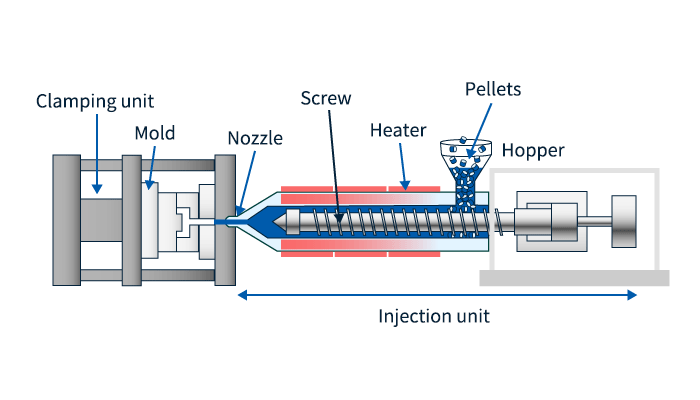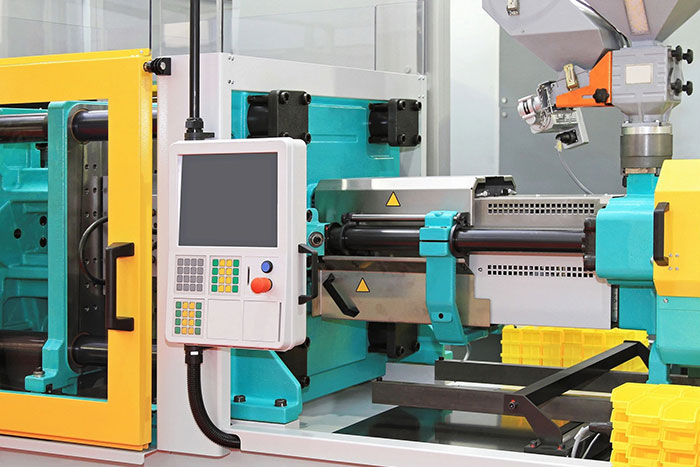Exactly How Plastic Injection Molding Drives Performance in Automation
Exactly How Plastic Injection Molding Drives Performance in Automation
Blog Article
The Future of Plastic Shot Molding: Trends and Developments to Watch
As the plastic injection molding market evolves, a number of crucial patterns are arising that promise to reshape its landscape. Automation and clever production methods are set to boost performance, while the shift towards sustainable materials mirrors an expanding environmental awareness. Developments in 3D printing are paving the way for unmatched design versatility. These technologies additionally bring forth challenges that need careful factor to consider. Recognizing how these aspects will certainly interact and affect future practices is critical for stakeholders wanting to browse this transformative duration effectively.
Automation and Smart Manufacturing
As the plastic injection molding sector develops, automation and wise manufacturing are taking center stage, transforming production processes - Plastic Injection Molding. The combination of sophisticated innovations such as robotics, IoT (Internet of Things), and expert system is enabling suppliers to enhance performance, decrease operational costs, and enhance item quality. Automated systems improve workflows, reducing manual intervention and raising throughput, which is essential in fulfilling the climbing demand for quick production cycles
Smart manufacturing modern technologies promote real-time monitoring and data evaluation, permitting business to enhance machine efficiency and forecast maintenance needs. This proactive method not only decreases downtime yet additionally extends the life expectancy of equipment. Moreover, using collaborative robotics, or cobots, enhances the adaptability of production lines, enabling workers and makers to operate side by side securely and efficiently.
The fostering of automation in plastic injection molding is not merely a fad yet a tactical essential for businesses intending to stay competitive in a worldwide market. By utilizing these technologies, suppliers can accomplish higher precision, reduce waste, and adjust swiftly to transforming consumer demands, placing themselves for sustainable development in a significantly automatic future.
Sustainable Materials and Practices
The push in the direction of automation and wise manufacturing has led the way for a higher emphasis on lasting products and practices within the plastic injection molding market. Companies are increasingly seeking environmentally friendly choices to traditional petroleum-based plastics, bring about the fostering of bio-based and recycled products. These sustainable products not only minimize environmental impact but likewise align with consumer demand for greener items.

Furthermore, partnership in between producers, product providers, and environmental companies is promoting advancement in the growth of lasting materials that fulfill performance criteria without endangering quality. As guidelines around plastic usage come to be stricter, the market is positioned to adjust by welcoming these sustainable approaches, making certain lasting stability and reducing reliance on non-renewable resources. The integration of sustainability into plastic injection molding is not just a trend; it is coming to be blog a necessary part of business responsibility and operational quality.
Advancements in 3D Printing
Current advancements in 3D printing technology are substantially changing the landscape of plastic shot molding. Difficult or as soon as challenging to attain with standard methods, the combination of additive manufacturing processes allows for the fast prototyping of complicated geometries that were. This capacity not only speeds up item development cycles but likewise minimizes product waste, straightening with the growing demand for lasting production techniques
In addition, the development of hybrid manufacturing strategies, which integrate 3D printing and injection molding, provides suppliers the ability to produce complex styles while keeping the efficiency of mass manufacturing. This strategy makes it possible for the manufacturing of customized components customized to certain consumer needs without sacrificing the speed and scalability that injection molding offers.
In addition, improvements in products, such as high-performance polymers and composites especially created for 3D printing, are enhancing the functional capabilities of printed elements. These products can hold up against higher anxiety and display boosted thermal properties, making them suitable for more requiring applications.
As 3D printing continues to advance, its assimilation into plastic injection molding processes assures to improve performance, lower expenses, and foster development in product layout, placing address suppliers to better meet the difficulties of an open market.
Data Analytics and IoT Assimilation
Data analytics and the assimilation of the Web of Things (IoT) are reinventing plastic injection molding by giving manufacturers with unprecedented understandings into their procedures. By leveraging real-time data accumulated from interconnected makers and sensing units, manufacturers can monitor performance metrics, recognize inadequacies, and optimize manufacturing procedures. This data-driven approach promotes predictive upkeep, decreasing check my blog downtime and prolonging equipment lifespan.
Additionally, IoT combination enables for boosted quality assurance. By constantly tracking variables such as temperature level, pressure, and cycle times, makers can swiftly spot inconsistencies from established criteria and make changes in genuine time. This not just boosts item consistency yet also minimizes waste and scrap prices.
The fusion of data analytics and IoT technologies likewise encourages makers to adopt more dexterous manufacturing techniques. With accessibility to detailed information analytics, companies can respond to market demands with better adaptability, changing production routines and configurations as required. This adaptability is important in a swiftly altering production landscape.

Customization and Design Versatility
Just how can modification and layout flexibility improve the competitiveness of plastic injection molding? In a significantly varied market, the capacity to offer tailored services is extremely important. Customization allows manufacturers to satisfy particular customer requirements, fitting special measurements, shapes, and capabilities that basic items might not fulfill. This flexibility not just cultivates customer loyalty however also opens avenues for new company chances across various fields, from automobile to consumer goods.
Improvements in layout modern technologies, such as computer-aided design (CAD) and quick prototyping, more strengthen this trend. These tools enable developers to produce complex geometries and elaborate patterns, which can be seamlessly incorporated right into the manufacturing process. Because of this, producers can respond swiftly to transforming consumer preferences and market needs.
In addition, the implementation of modular tooling systems boosts layout versatility, permitting quicker changes between various product layouts without extensive downtime. This versatility can cause reduced preparations and reduced production costs, making business extra agile and affordable. Inevitably, accepting modification and style versatility in plastic shot molding not only raises product offerings however likewise reinforces market positioning in an ever-evolving landscape.
Final Thought
The future of plastic injection molding is defined by significant innovations in automation, sustainable methods, and innovative products. Personalization via modular tooling and fast prototyping will enable makers to remain affordable and receptive to the dynamic needs of the market.

The future of plastic injection molding is identified by substantial improvements in automation, sustainable methods, and ingenious materials.
Report this page